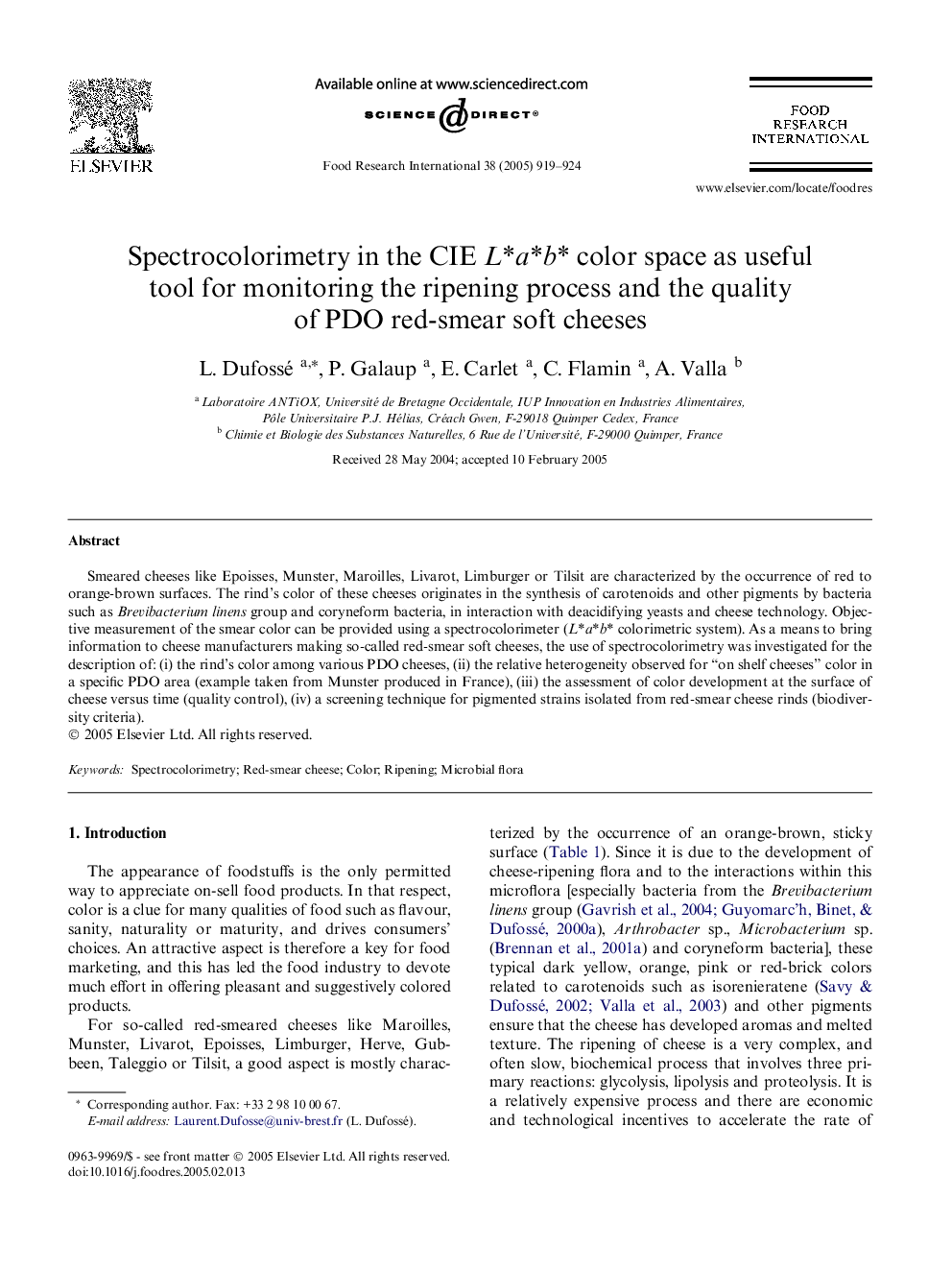| Article ID | Journal | Published Year | Pages | File Type |
|---|---|---|---|---|
| 9487401 | Food Research International | 2005 | 6 Pages |
Abstract
Smeared cheeses like Epoisses, Munster, Maroilles, Livarot, Limburger or Tilsit are characterized by the occurrence of red to orange-brown surfaces. The rind's color of these cheeses originates in the synthesis of carotenoids and other pigments by bacteria such as Brevibacterium linens group and coryneform bacteria, in interaction with deacidifying yeasts and cheese technology. Objective measurement of the smear color can be provided using a spectrocolorimeter (L*a*b* colorimetric system). As a means to bring information to cheese manufacturers making so-called red-smear soft cheeses, the use of spectrocolorimetry was investigated for the description of: (i) the rind's color among various PDO cheeses, (ii) the relative heterogeneity observed for “on shelf cheeses” color in a specific PDO area (example taken from Munster produced in France), (iii) the assessment of color development at the surface of cheese versus time (quality control), (iv) a screening technique for pigmented strains isolated from red-smear cheese rinds (biodiversity criteria).
Related Topics
Life Sciences
Agricultural and Biological Sciences
Food Science
Authors
L. Dufossé, P. Galaup, E. Carlet, C. Flamin, A. Valla,
